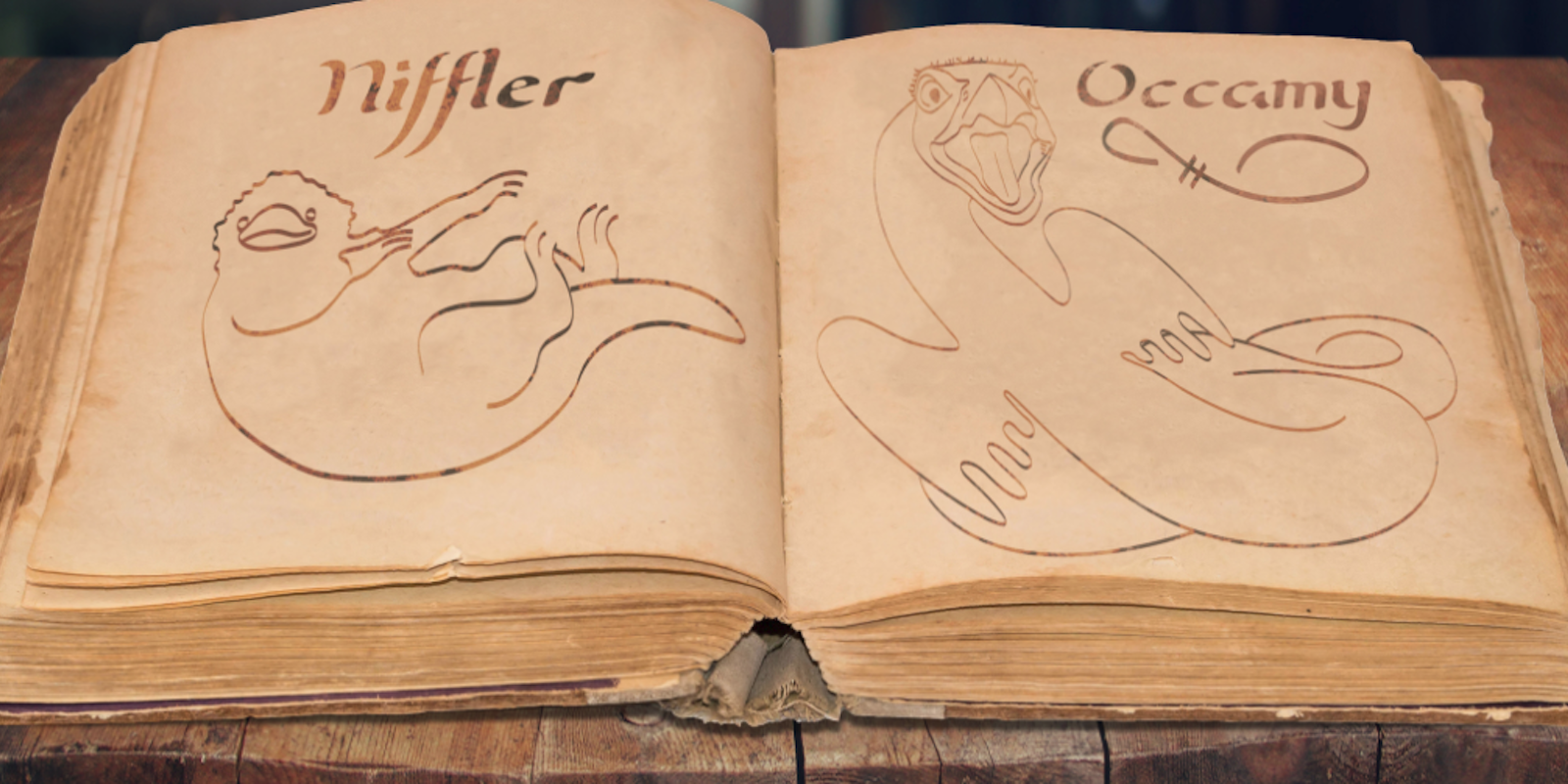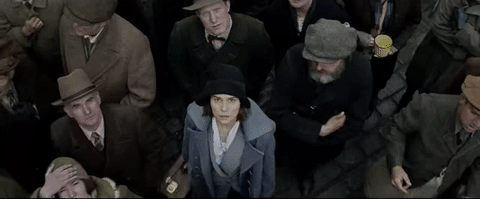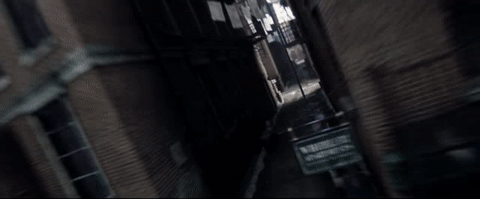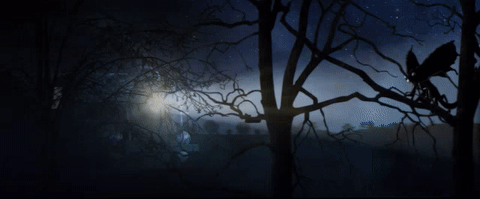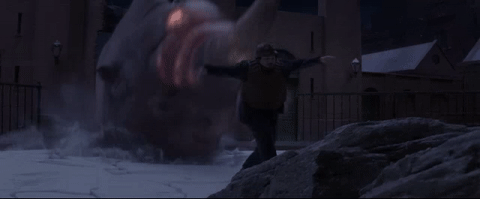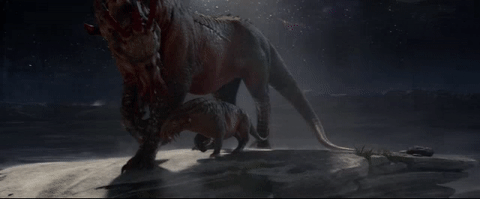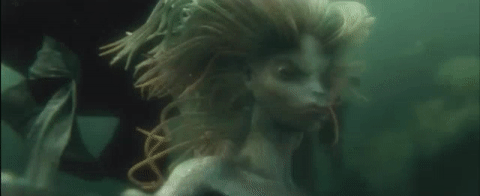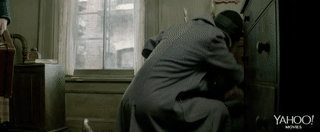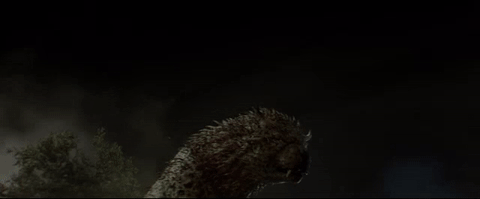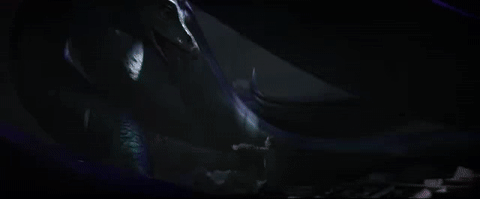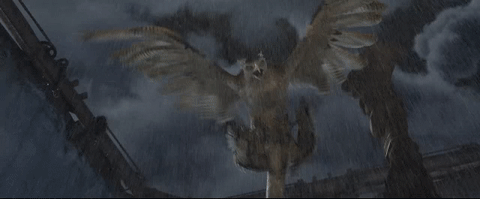Fantastic Beasts and Where to Find Them will tell a story unlike anything we’ve seen in the Harry Potter universe, and as the title promises, that includes a serious list of fantastic beasts.
Of course J.K. Rowling has never really had a shortage of unusual species in her stories. The Harry Potter series was packed with them. Thestrals, doxies, dragons, and more were all part of the plot, as both allies and adversaries. All of those creatures—except for Hagrid’s Blast-Ended Skrewts—appear in the pages of Fantastic Beasts and Where to Find Them, the Hogwarts textbook by magizoologist Newt Scamander.
Initially a book Harry had to purchase for his first year at Hogwarts and a vital text for any Care of Magical Creatures student, it came into the Muggle world in 2001 with help from Rowling, who published a real-life version of it for charity. Many of its creatures will now come to life in Fantastic Beasts the film—some for the first time—along with new additions “to add some variety to the visual palette.”
They’re mischievous, dangerous, shy, friendly, and more than ready to cause havoc in Newt’s magical suitcase and in 1926 New York. We know Newt is far more comfortable with his creatures than he is with people. So what are the fantastic beasts of Fantastic Beasts?
A List of Fantastic Beasts
Ashwinder
Appearance: Fantastic Beasts
A serpent born from the dying embers of a fire, the ashwinder lives for only an hour—long enough for it to lay eggs. Professor Kettleburn, the Care of Magical Creatures professor before Hagrid, once used an engorged ashwinder in a production of the wizarding fairy tale “The Fountain of Fair Fortune,” resulting in the Great Hall catching fire.
Billywig
Appearance: Fantastic Beasts
Native to Australia, billywigs are small and speedy insects rarely seen by Muggles—and even witches and wizards don’t notice them until after they’re stung, causing giddiness and levitation. They’re often used in potion-making (as well as possibly Fizzing Whizzbees), and they’re said to “induce an elevated frame of mind,” leading some Australian witches and wizards to try and purposely get stung.
Bowtruckle
Appearances: Fantastic Beasts; Harry Potter and the Order of the Phoenix (book)
Bowtruckles are tree guardians found in the west of England, southern Germany, and in some Scandinavian forests. Small in size, bowtruckles are mostly peaceful and shy and generally won’t attack with their sharp fingers unless their tree is threatened. If you give them woodlice, wizards and witches can remove them from their tree long enough to obtain wand wood.
Harry first encounters bowtruckles during a fifth year Care of Magical Creatures class. There, bowtruckles are not much more than background creatures as Draco Malfoy insults Hagrid loud enough so that Harry lashes out. While Harry doesn’t completely flip out, he is on the receiving end of a bowtruckle who didn’t like being gripped so hard.
Newt, however, is very attached to bowtruckles—or at least one in particular, which he was named Pickett. Pickett has attachment issues, so he often hangs around Newt instead of with his own kind, who have apparently accused the magizoologist of favoritism.
Demiguise
Appearance: Fantastic Beasts; Harry Potter and the Cursed Child
The demiguise is a peaceful creature that looks similar to an ape. It’s herbivorous and located in the Far East, and hard to see unless one is trained how to locate them. Its pelt is used to make Invisibility Cloaks, which—unlike Harry’s, which is a Deathly Hallow—eventually turn opaque over time. It also has precognitive sight.
Diricawl
Appearance: Fantastic Beasts
Muggles will know the diricawl, a colorful and flightless bird, better as the dodo. It can vanish at will, which has led Muggles to think it hunted the diricawl into extinction. The wizarding community has yet to correct Muggles on this, figuring it better to have them learn a lesson instead.
Doxy
Appearances: Fantastic Beasts; Harry Potter and the Order of the Phoenix
Found in Europe and North America, Doxies are fairy-like in appearance with the exception of its extra set of arms and legs and black hair. They’re a type of pest in the Wizarding World, sometimes spawning infestations in homes. Wizards and witches are able to remove them either through Doxycide, which Harry, Ron, and Hermione used to clear the nest that appeared at 12 Grimmauld Place, or with the Knockback Jinx.
While the Doxy hasn’t been spotted in Fantastic Beasts the film so far, it is seen eating a Billywig as the Hogwarts Express passes it in an IMAX featurette.
Erumpent
Appearances: Fantastic Beasts; Harry Potter and the Deathly Hallows (book)
One of the more dangerous magical creatures on this list, erumpents are visually similar to a rhinoceros except they have an explosive horn on their heads. They’re native to Africa and are respected by African witches and wizards.
Xenophilius Lovegood was in possession of a erumpent horn during Deathly Hallows, which he believed was from a Crumple-Horned Snorkack. A Death Eater attempting to capture Harry, Ron, and Hermione hit it by accident, and as a result blew up a good portion of the Lovegoods’ home.
Fwooper
Appearances: Fantastic Beasts; the Wizarding World of Harry Potter
A fwooper is a loud and bright African bird that needs to be silenced with a Silencing Charm because its song will drive whoever listens to it mad. While not seen in the films or books, a fwooper is visible in Diagon Alley at the Wizarding World of Harry Potter.
Graphorn
Appearance: Fantastic Beasts
Graphorns are native to mountain regions in Europe with horns and skin that’s even thicker than a dragon’s. They are sometimes used as steeds by mountain trolls. While aggressive and dangerous, they’re exceedingly rare, as wizards and witches use graphorn horns as a potion ingredient. Newt has the last breeding pair of graphorns in his magical suitcase.
Hippocampus
Appearance: Fantastic Beasts; Harry Potter and the Goblet of Fire (cut from film)
The hippocampus is a cross between a horse and a fish, often found in the Mediterranean and used as a steed by Merpeople (although some were captured in Scotland by merpeople and domesticated at Hogwarts).
Kappa
Appearance: Harry Potter and the Prisoner of Azkaban (book)
Kappas, which are Japanese water demons that look like scaly monkeys, lurk in lakes and ponds and will strangle humans who disturb them. It’s one of the many dark creatures Professor Remus Lupin introduced third year students to during his tenure as Defense Against the Dark Arts professor.
Lethifold
Appearance: Fantastic Beasts
Located in tropical climates, the lethifold is similar in nature to a dementor. It targets humans when they are sleeping at night, suffocating them before eating them. The only known line of defense is casting a Patronus Charm, which is often impossible when its potential victims are either asleep or Muggles. Not yet seen in the trailers, the lethifold was confirmed by Entertainment Weekly.
Merpeople
Appearance: Harry Potter and the Goblet of Fire (book and movie)
Merpeople are mysterious, sentient creatures (they rejected being categorized as “beings”) whose ways aren’t well-known even to the wizarding world. They’ve been around for millennia—first called Sirens—and while they thrive in warmer water (and that’s where Muggle perception of merpeople of beauty comes from), they live all over the world. They’re able to breathe above water, although it’s unclear for how long.
Hogwarts in particular has a merpeople colony located in the Great Lake, some who Harry met during the second task of the Tri-Wizard Tournament. But Entertainment Weekly first announced that merpeople would be part of Fantastic Beasts last November, but it’s not clear if they will appear similarly to the Hogwarts merpeople or look closer to how Muggles view them.
Mooncalf
Appearance: Fantastic Beasts
Normally shy creatures, mooncalves only appear during the full moon to perform what might be its mating ritual through a dance on its hind legs. It unintentionally results in crop circles that end up confusing Muggles.
Murtlap
First appearance: Fantastic Beasts; Harry Potter and the Order of the Phoenix (book)
The murtlap is like a cross between a rat and a sea anemone located on the British coast. It’s notable in Harry Potter mostly for its tentacles, which can be pickled and used to make someone more resistant to jinxes or to heal cuts and abrasions—like Harry’s “I must not tell lies” cuts from Dolores Umbridge’s quill.
Niffler
Appearance: Harry Potter and the Goblet of Fire (book)
Small, cuddly, and affectionate yet completely destructive, nifflers are usually kept by goblins to search for treasure. While they’re excellent at finding anything that sparkles and glitters, they can quickly cause havoc. Or, as Ron Weasley discovered when his niffler gave him leprechaun gold during a fourth year Care of Magical Creatures class, heartbreak.
Newt’s niffler in particular is good at getting into trouble, having escaped from his magical suitcase and getting into at least one bank vault during Fantastic Beasts.
Nundu
Appearance: Fantastic Beasts
The nundu, considered to be one of the most dangerous creatures alive, is described as being similar to a leopard. Its breath is toxic and is capable of wiping out villages, and it takes at least 100 wizards to defeat it.
Occamy
Appearance: Fantastic Beasts
The occamy is a very territorial and aggressive serpent-esque creature with two legs and wings located in India and the Far East. It’s highly protective of its eggs, which are made of very soft silver. (And possibly what Jacob Kowalski is holding in one of the film’s trailers.)
Occamies also have the ability to grow or shrink, which explains why that a massive occamy is able to fit inside of a teapot.
Runespoor
Appearance: Fantastic Beasts
The runespoor is a giant, three-headed snake (each head has a different function) and has a long association with dark wizards and witches because parselmouths have been able to talk to it. It’s easily spottable, so wizards and witches have made unplottable forests to hide them in.
Sasquatch
Appearance: Pottermore
Known to Muggles as Bigfoot, the sasquatch is native to the Pacific northwest. A sasquatch rebellion in the 19th century caused MACUSA to move its headquarters from Washington, D.C., to New York City.
Swooping Evil
Appearance: Fantastic Beasts
The Swooping Evil is a winged creature that’s like a cross between a reptile and a butterfly that can be released from a small container. And while the Pokémon-like capability sounds kind of cool, it can also feed on people’s brains and its diluted venom can be used to erase bad memories.
Thestral
Appearances: Fantastic Beasts; Harry Potter and the Order of the Phoenix (book and film)
Grouped as a breed of winged horses in Fantastic Beasts, thestrals are initially described as rare creatures with the power of invisibility and a sign of bad luck to some wizards. However, it’s possible that some fans might have forgotten that throwaway line when Harry first countered thestrals in Order of the Phoenix. At Hogwarts, Hagrid has trained them to draw the carriages from Hogsmeade Station to the school, something most students aren’t aware of during their time there.
Thestrals are invisible because they can only be seen by someone who has witnessed death, hence why it took until after Cedric Diggory died for Harry to finally see them. With some help from Hagrid and Luna Lovegood, who can also see them, Harry learns that they’re misunderstood and highly intelligent creatures—and with an excellent sense of direction.
Thestrals aren’t explicitly seen in the trailers released so far but they will be in the film, according to Collider.
Thunderbird
First appearance: Pottermore
A relative to the phoenix, native to Arizona’s climate, and comparable to eagles and hippogriffs, the thunderbird is capable of creating storms and can easily sense danger. The Thunderbird is one of the new creatures created by Rowling, which first appears in Pottermore’s history of Ilvermorney, the North American wizarding school. It’s also the name of one of Ilvermorney’s four Houses, which are all named after magical creatures.
According to Entertainment Weekly, Newt rescued the thunderbird that appears in Fantastic Beasts from traffickers in Egypt and promised to return him to Arizona. Newt has since named him Frank.
Editor’s note: This article is regularly updated for relevance.

